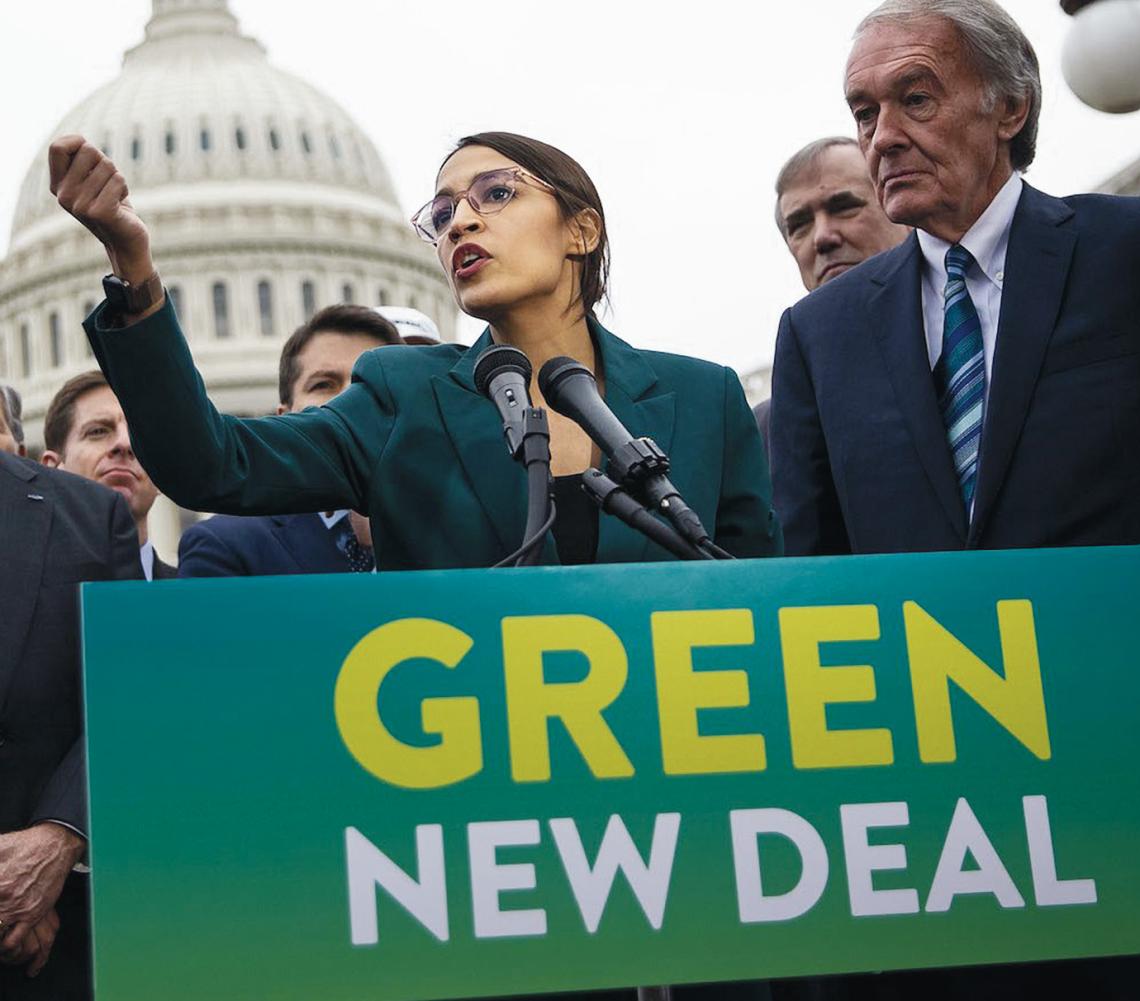Why the Green New Deal matters to labor and for the public’s health

President Franklin D. Roosevelt (FDR) assumed office in 1933 to a country in grave trouble. It was The Great Depression and more than 60 percent of the U.S. was living in poverty. Banks were shuttered, the future was bleak.
Hardest-hit were working people: construction workers, farmers, manufacturers, families.
Roosevelt knew the country needed a fundamental change—that the usual political solutions wouldn’t be enough to turn things around. With help from Congress, his administration implemented The New Deal: a series of public programs that would bring the country back to life.
An important legacy
Upon assuming office, the FDR administration launched a variety of programs in short order. They launched a Civilian Conservation Corps to put men back to work in rural areas. They created the National Labor Relations Board to protect workers’ rights by growing labor unions. They passed the Social Security Act to support the retired, elderly, disabled, and survivors of loss.
These policies, and many more, were among the most ambitious government projects in American history. They not only brought the American people and the economy back to life, they also created an important political legacy that still resonates.
An ambitious agenda
Today, as we tackle the fundamental crises facing our country—income inequality and climate change—members of Congress have looked back to FDR’s approach and proposed the Green New Deal. L
ike Roosevelt, the Green New Deal focuses on what historians call the “three Rs”: 1) relief for the unemployed and the poor; 2) recovery of the economy; and 3) reform of the financial system.
Within the next 10 years, the Green New Deal aims to provide everyone in the country with:
- High-quality healthcare
- A job with a family-sustaining wage, family and medical leave, paid vacations, and retirement security
- Affordable, safe housing
- Access to clean water, clean air, healthy and affordable food, and nature
- Resources, training, and high-quality education, including higher education
It will do this by creating jobs and government programs that will:
- Move 100 percent of the power demand to clean, renewable, zero-emission energy sources
- Repair and upgrade infrastructure
- Spur massive growth in clean manufacturing
- Ensure that all Green New Deal jobs are union jobs that pay prevailing wages and hire local
- Upgrade buildings to maximal energy efficiency, water efficiency, safety, affordability, comfort, and durability
- Ensure affordable access to electricity
- Overhaul transportation systems to eliminate pollution from transportation
- Work with farmers and ranchers to eliminate pollution from agriculture
Though the ideas behind the Green New Deal have been around since the 1970s, only in recent years—as inequality balloons and the planet changes drastically before our eyes—have its policies gained real political support.
Driven by U.S. Representative Alexandria Ocasio-Cortez (D-NY) and Senator Edward Markey (D-MA), the Green New Deal now has 102 supporters in Congress and 11 of the Democratic presidential candidates touting its importance on the campaign trail.
A boost to labor
The Green New Deal also includes a boost to organized labor and a national reminder that unions protect workers and the economy as a whole. In its current form, the Green New Deal includes a federal jobs guarantee, workforce retraining, strengthening of collective bargaining rights, retirement security, and universal healthcare.
But perhaps most important are the positive health effects these policies will have on everyday Americans. Our members have seen the impacts of poor environmental conditions on our patients and in our own families. We have seen how drastically our country’s income disparity has grown, and how critical union representation is to protect our jobs, our patients and our communities.
Well-being for generations to come
Whether it’s an agricultural community in the Finger Lakes or an urban center in the heart of NYC, the Green New Deal will fundamentally and positively impact New York State.
NYSNA supports moving the U.S. economy to clean energy, reducing pollution to the very best of our technical abilities, ensuring access to clean water, air, food and nature, and doing so by growing good-paying union jobs for all Americans.
These measures will strengthen America’s health and well-being for generations to come.
U.S. Representative Alexandria Ocasio-Cortez (D-NY) and Senator Edward Markey (D-MA) introduce the Green New Deal